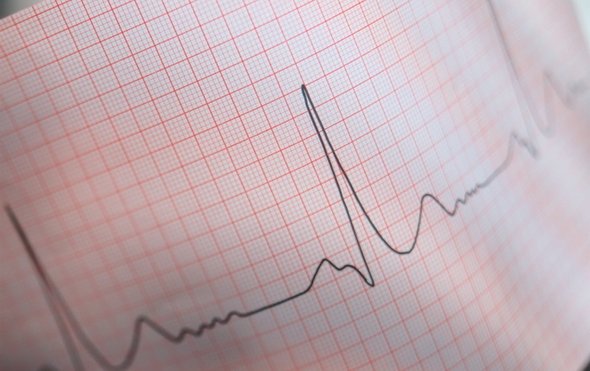This is Scientific American — 60-Second Science. I'm Christopher Intagliata.
(ECG sound) That beeping sound is the normal beating of a heart.
(ECG fast sound) But here's what the same heart sounds like, during a bout of ventricular tachycardia, or VT... the racing beats are caused by an electrical short circuit in the muscle. In a moment, a defibrillator is going to zap the heart, to return it to a slow and steady pace.
The root cause of VT? "So the villain inside the heart is almost always a scar from a prior injury." Phillip Cuculich, a cardiac electrophysiologist at Washington University in Saint Louis. "Most commonly that's a prior heart attack or sometimes leftover scar from an infection that somebody might have, or an inflammatory disease someone might have."
That arrhythmia can be treated with drugs, or surgery, too: by inserting catheters up through the leg into the beating heart, and blasting the troublemaking scar tissue with heat. That kills the scar cells, and can coax the heart back to a normal rhythm.
But now Cuculich and his colleague Clifford Robinson are trying to achieve the heat treatment's effect noninvasively, by blasting those tiny scarred patches of the heart with high-dose radiation... the kind used to destroy brain and lung tumors.
"You might say that destroying heart doesn't sound appealing, and it doesn't sound like that's a good thing." But in a limited study of five patients who'd run out of other options, the treatment dramatically cut cases of arrhythmia. Before treatment, they collectively suffered more than 6500 bouts of arrhythmia in just three months. In the six weeks after treatment – the incidents plummeted to only about 700. And in the following year the group experienced only four arrhythmias, collectively...a 99.9 percent reduction. The method, which Cuculich and Robinson have a patent pending on, is described in The New England Journal of Medicine.

The treatment does have advantages: it's just 15 minutes, compared to 6-8 hours on an operating table. It seems at least as effective as the surgical treatment. And though a typical session of this radiation can cost tens of thousands of dollars, the doctors say that might still be cheaper than surgery and the resulting hospital stay.
But there are uncertainties, like whether the radiation may contribute to cancer later in life, or damage nearby structures. And one patient had a fatal stroke three weeks after treatment...though it's unclear if the treatment had any connection. Robinson says that the technique might work like surgery, by damaging or killing scar cells, but the mechanism has not been proven.
"This needs to be investigated in multiple levels, in what we refer to the preclinical environment, so looking at cells or animals. But this also could be investigated further in patients, by understanding what's happening using imaging, after the patient received their treatment. Or looking at how the signals of the heart change after treatment as well."
But if this radiation method proves safe and effective, it might be a simpler strategy...to help the heart regain its rhythm.
Thanks for listening for Scientific American — 60-Second Science. I'm Christopher Intagliata.












